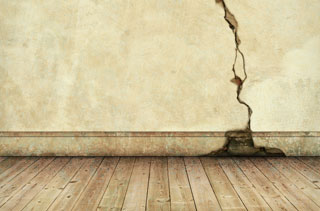If you are painting multiple properties of your portfolio, that will also fall in the category of capital expenditure. But, routine painting upon move-out is considered just as routine repairs. You won't be able to draw your capital expenditure reserve to make the payment of run-of-the mill maintenance.
MAINTENANCE AND REPAIRS
Move-out painting, touch-up painting or patching a wall or mending a floor etc. types of repairs fall in the category of routine repairs. The capital expenditure reserve don't provide coverage for routine maintenance, rather it is covered by an investor's annual operating budget.
It is quite simple to identify the routine maintenance by considering the repairs that tends to be recurring. Examples include cleaning/washing/steaming of the carpets, maintenance of existing appliances or repairing the walls or floors.
However, there are some repairs that are possibly paid for from either the capital expenditure fund or the operating fund. You need to look whether it is a ''major'' expense to get eligible to be paid for from capital expenditure reserves.
For example, if you need to replace sinks or toilets of multiple properties, that would come from the CapEx reserves. On the contrary, if you just need to replace one sink or toilet, the amount will be paid off from your annual operating budget. If you want to replace one light fixture, expect the replacement cost from your operating budget. The multiple light fixtures can certainly be covered by CapEx fund.
The following table will help you know the various factual considerations used by the IRS. You can consider these factors in your analysis to distinguish between capital expenditure and deductible repairs.
| Capital | Repair |
| Improvements increase the asset's value and ''put'' property in a proper operating condition | Repairs ''keep'' property in a proper working order |
| Restores the property to make it look ''new'' | Restores the property to its previous condition |
| Addition of new or replacement elements or materials to property | Routine maintenance to protect the property against underlying problems |
| Addition of upgrades or modifications to property | Incidental repair to the property |
| Enhances the value & useful of the property | The property value does not increase significantly |
| Improves the quality and efficiency of the property with new equipment | No new equipment is added |
| Increases the strength and capacity of the property | |
| Ameliorates the condition or defect | |
|
Adapts the property to a new use |
We truly believe that these examples give investors a clear view about the difference between capital expenditures and routine maintenances. Remember, the money remained in the capital expenditure account is returned to the borrower at the end of the loan term. You can talk to our Rental Home Financing experts to know more about capital expenditures and routine repairs. Simply Call at 888-375-7977 to book an appointment with our rental financing specialists.


 Financing for a single-family rental investment is generally based on the principles of commercial lending that include a capital expenditure reserve. For some
Financing for a single-family rental investment is generally based on the principles of commercial lending that include a capital expenditure reserve. For some